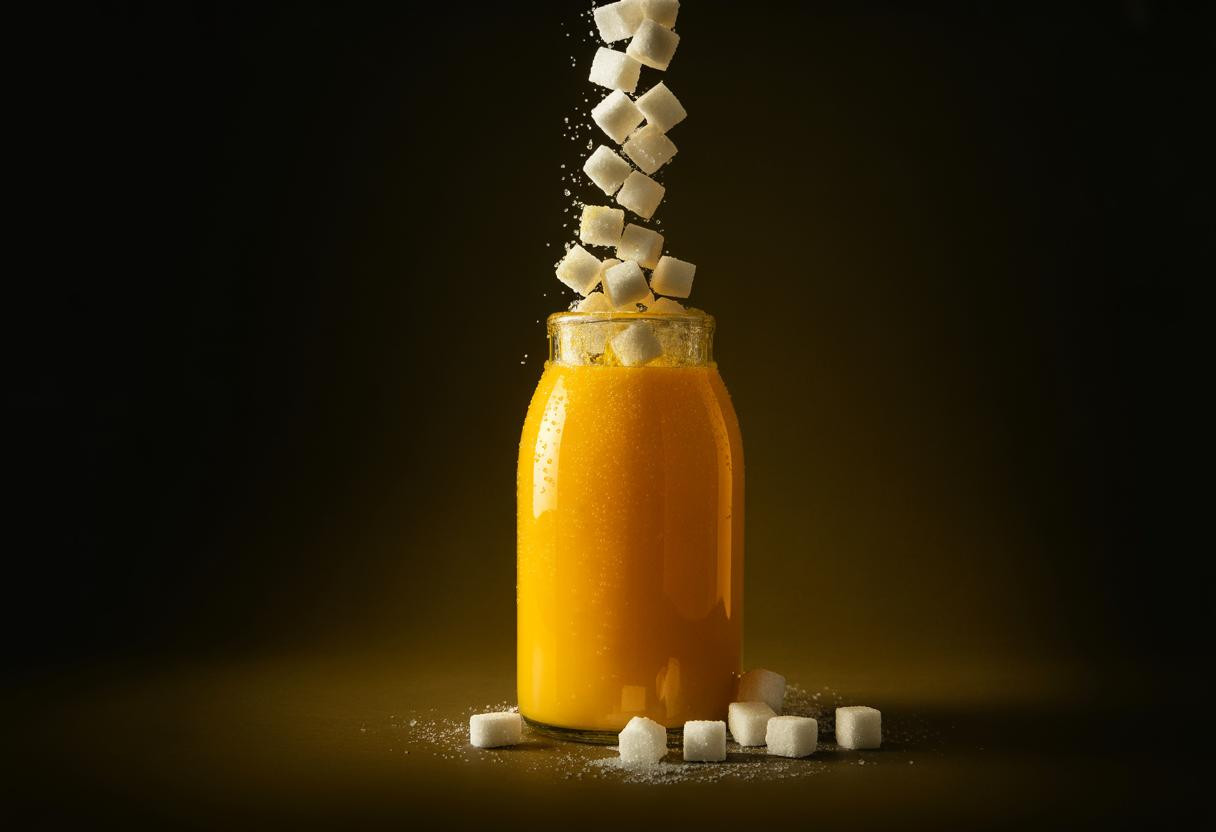When you grab that bottle labeled “100% natural fruit juice” from the grocery shelf, you might assume you’re getting pure, unprocessed fruit in liquid form. However, the reality behind these labels reveals a complex web of regulatory loopholes, processing techniques, and marketing strategies that would surprise most health-conscious consumers.
The hidden world of “natural” juice processing
The term “100% juice” has a specific legal definition under FDA regulations, referring to juice directly expressed from fruits without added sugars. Yet this doesn’t mean the juice hasn’t been heavily processed or concentrated before reaching your glass.
Many manufacturers use reconstituted concentrates that must meet minimum sugar levels – apple juice, for example, requires 11.2°Brix for reconstituted versions compared to 10.2°Brix for single-strength juice. This concentration process can actually increase the natural sugar content beyond what you’d find in fresh fruit.
The pasteurization required by HACCP regulations ensures safety but fundamentally alters the juice’s nutritional profile. While this process eliminates harmful bacteria, it also concentrates sugars and can reduce vitamin C content, creating a product that’s technically “natural” but nutritionally different from fresh fruit.
Three shocking discoveries about juice labeling
The concentration loophole changes everything
Fruit juice concentrates can legally be added as “natural sweeteners” to other juices while maintaining the “100% natural” label. Apple juice concentrate, for instance, serves as a common sweetener in many fruit blends, technically qualifying as natural despite being a processed additive.
This practice mirrors concerns found in other consumer products, where seemingly natural ingredients can have unexpected health impacts due to processing methods that consumers rarely consider.
Sugar content rivals soda in some cases
A 12-ounce serving of “100% natural” grape juice contains approximately 36 grams of sugar – nearly matching a can of Coca-Cola. The key difference lies not in sugar content but in source: natural fructose versus high-fructose corn syrup.
Recent metabolic research suggests that concentrated fruit sugars can trigger similar glycemic responses to added sugars, challenging the assumption that “natural” automatically means healthier.
Global regulations create inconsistent standards
International standards vary significantly, with Codex Alimentarius allowing lower sugar concentrations for reconstituted juices than FDA requirements. This creates a regulatory patchwork that manufacturers navigate strategically, potentially affecting the final product’s composition based on intended markets.
What this means for your daily choices
Understanding these industry practices doesn’t mean avoiding fruit juices entirely, but rather making informed decisions about consumption patterns. The fiber removal during juicing fundamentally changes how your body processes fruit sugars, regardless of whether they’re “natural.”
Consider that many overlooked natural sources provide superior nutritional benefits compared to processed alternatives, even those labeled as premium or natural.
Just as concerns exist about hidden processing residues affecting gut health, the concentration and pasteurization processes in juice production create compounds and sugar densities that don’t exist in whole fruits.
Smart strategies for navigating juice choices
Read beyond the front label
Check ingredient lists for “natural flavors” or multiple fruit concentrates, which often indicate blending with cheaper, high-sugar fruits like apple or grape concentrate.
Consider dilution as a healthier option
Mixing 100% juice with sparkling water can reduce sugar intake by 50% while maintaining flavor satisfaction, a strategy many nutritionists recommend for transitioning away from high-sugar beverages.
Time consumption strategically
If consuming fruit juice, pair it with protein or fiber-rich foods to slow sugar absorption and minimize blood glucose spikes.
The bigger picture behind natural labeling
This analysis reveals how marketing terms like “natural” can obscure the reality of industrial food processing. While 100% fruit juices remain preferable to artificially sweetened alternatives, understanding their true nature empowers better dietary decisions. The key insight isn’t to fear these products, but to recognize that even “natural” processed foods require the same thoughtful consumption approach as any concentrated sugar source.
